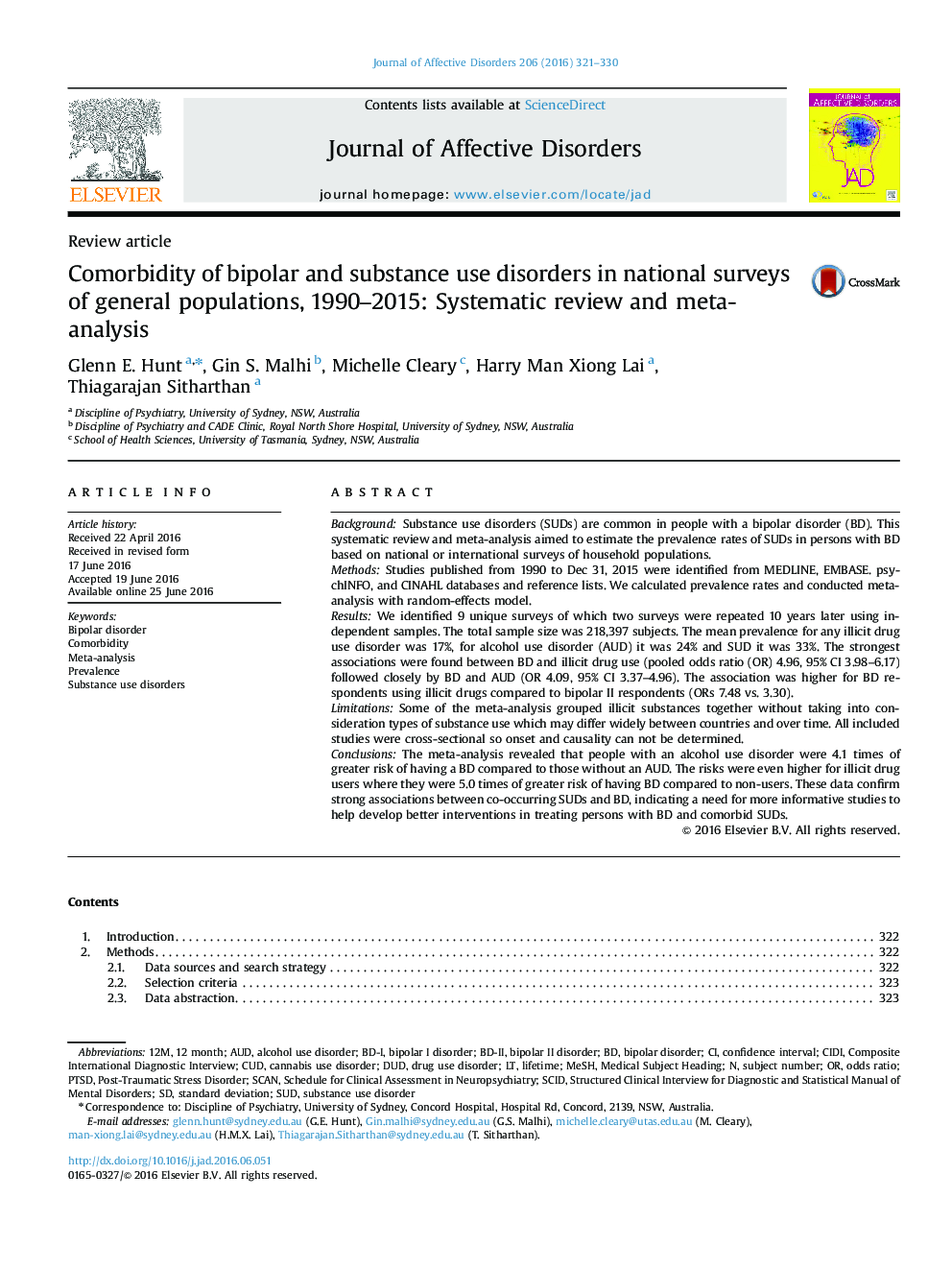| Article ID | Journal | Published Year | Pages | File Type |
|---|---|---|---|---|
| 6229838 | Journal of Affective Disorders | 2016 | 10 Pages |
â¢People with a bipolar disorder commonly have comorbid substance use disorders.â¢The strongest associations were found between bipolar disorder and illicit drug use.â¢Odds ratios for illicit drug use were higher in mania compared to hypomania.â¢Better interventions are needed for comorbid substance use and bipolar disorder.
BackgroundSubstance use disorders (SUDs) are common in people with a bipolar disorder (BD). This systematic review and meta-analysis aimed to estimate the prevalence rates of SUDs in persons with BD based on national or international surveys of household populations.MethodsStudies published from 1990 to Dec 31, 2015 were identified from MEDLINE, EMBASE. psychINFO, and CINAHL databases and reference lists. We calculated prevalence rates and conducted meta-analysis with random-effects model.ResultsWe identified 9 unique surveys of which two surveys were repeated 10 years later using independent samples. The total sample size was 218,397 subjects. The mean prevalence for any illicit drug use disorder was 17%, for alcohol use disorder (AUD) it was 24% and SUD it was 33%. The strongest associations were found between BD and illicit drug use (pooled odds ratio (OR) 4.96, 95% CI 3.98-6.17) followed closely by BD and AUD (OR 4.09, 95% CI 3.37-4.96). The association was higher for BD respondents using illicit drugs compared to bipolar II respondents (ORs 7.48 vs. 3.30).LimitationsSome of the meta-analysis grouped illicit substances together without taking into consideration types of substance use which may differ widely between countries and over time. All included studies were cross-sectional so onset and causality can not be determined.ConclusionsThe meta-analysis revealed that people with an alcohol use disorder were 4.1 times of greater risk of having a BD compared to those without an AUD. The risks were even higher for illicit drug users where they were 5.0 times of greater risk of having BD compared to non-users. These data confirm strong associations between co-occurring SUDs and BD, indicating a need for more informative studies to help develop better interventions in treating persons with BD and comorbid SUDs.
